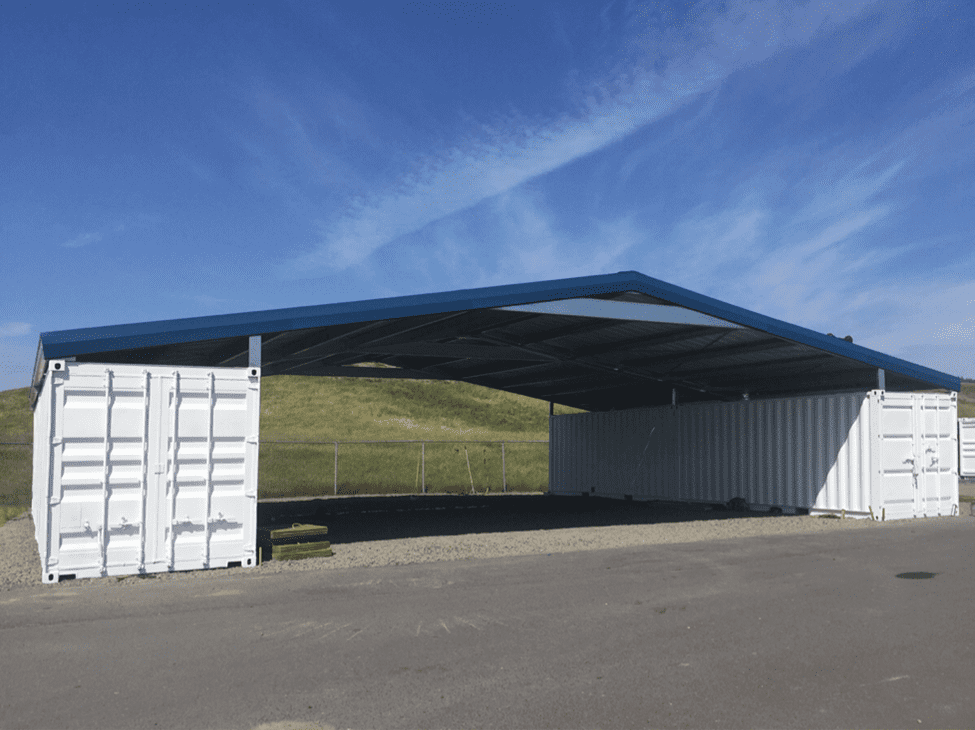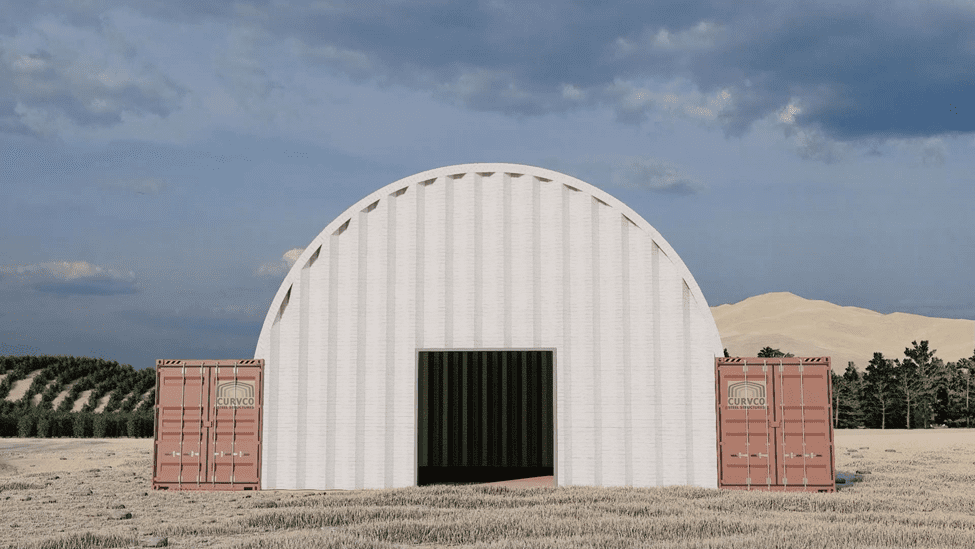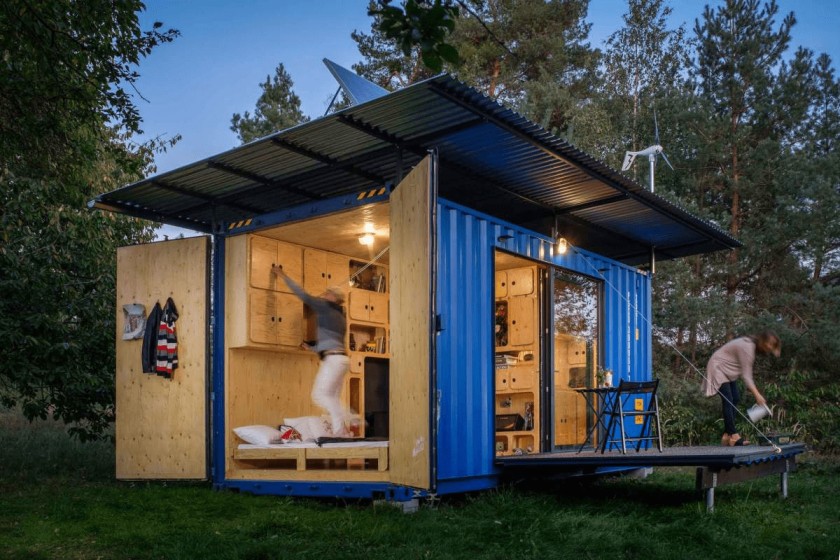
Shipping containers are more than just vessels for transporting cargo. Many people use shipping containers to build houses, garages, or storage solutions. Shipping container structures are cheap and easy to build. Just like other types of buildings, shipping container structures need roofs. A roof can protect your house, garage, or storage from solar radiation. It can also provide overhand shading to the walls, windows, and doors. This can translate into a lifetime of savings since you can conserve energy and have lower utility bills.
This article will show you some incredible shipping container roof plans you can use as you build your shipping container home.
Table of Contents
- 1 What are the Different Types of Shipping Container Roofs?
- 2 What are Shipping Container Roof Plans?
- 3 What are the Recommended Shipping Container Roof Plans?
- 4 Things to Consider Before Choosing a Shipping Container Roof Plan
- 5 How Do You Install a Roof On a Shipping Container?
- 6 Frequently Asked Questions
- 7 Conclusion
What are the Different Types of Shipping Container Roofs?
You can choose from different types of shipping container roofs as you design your shipping container building. Each type has its benefits and drawbacks, so choose the roof type that best suits your needs.
- Shed – This is a type of roof with one steeply sloped side. The steep slope promotes water and snow drainage and maximizes the attic or top floor space. It is easy to build and affordable. If you plan on installing solar panels, a shed-type roof is an excellent choice because you can easily fit your solar panels on a shed-type roof. This can help increase your energy savings and lower your utilities. Read our inside shipping container homes article to learn what a shipping container home interior looks like.
- Gable – If you want to give your shipping container building a traditional look, a gable-type roof is your best choice. Its triangle look is commonly seen in traditional homes. What’s great about this roof type is its excellent water drainage capabilities. If you live in an area that receives a lot of rain, a gable-type roof is your best choice, as it can help prevent leaks and might help extend the life of your roof and your shipping container home.
- Flat – This is the type of roof that shipping containers already have, and it might be enough for some homeowners. If you are working on a tight budget, you can retain your current roof. However, the container’s flat roof will leave your structure vulnerable to water pooling and leaks.
What are Shipping Container Roof Plans?
A shipping container roof plan or kit lets you create a large-area roof system. You can attach a roof on the edges of two shipping containers to create a covered area for your living spaces like your bedrooms, bathrooms, kitchen, and living room. A shipping container roof kit is also useful if you want to build a shipping container garage.
Purchasing a shipping container roof kit can help you save money because it is affordable and easy to install. If you are going for a DIY shipping container build, you can install the roof kit without hiring a professional roofer. Read our article on how to build a shipping container home if you want to go the DIY route and ensure everything goes well during your build.
What are the Recommended Shipping Container Roof Plans?
Below are some roof plans you can explore to protect your shipping container building from the elements.
Gable 40

This is an all-steel roof kit ideal for garages or large storage areas. The kit’s dimensions are 20’x56’ and give users an overall covered area of 40’x20’. It utilizes a traditional gable-type design and is exterior-mounted. Customers also have the option of getting a kit that increases the overall useable area to 40’x40’ if they need more space.
Read our article about shipping container storage to learn how to build an affordable storage area.
Arched Container Roof

This is an arched or domed shipping container roof ideal for garages or storage units. The roof is inside-mounted to let you maximize the usable area. The structure is enclosed with steel frames. The front one has an opening where you can install a garage door or a roll-up to protect the structure’s contents.
Receive Quotes from Multiple Barndominium Builders & Kit Providers Near You Today (It's Free!)
Fill in this 1-minute form below and receive estimates for your project without having to find them yourself! Let them do the work.
Read our article about shipping container garages if you need a safe place to store your vehicles.
Hinged Roof

We mentioned earlier that one of the downsides of shipping container roofs is that they are prone to water pooling and leaks. One way to remedy this is by having a flat hinged roof. An extra flat roof is installed above the existing roof of the shipping container and provides an additional layer of insulation. The second roof is sloped to ensure that water won’t pool and prevent rusting.
Read our article about fantastic shipping container home ideas to learn other creative ways to build your container home.
Things to Consider Before Choosing a Shipping Container Roof Plan
There are some things you need to consider before buying a shipping container roof plan. These factors can help ensure that you have the right roof for your needs.
Customization
The ability to customize a roof is vital because it can help ensure that the roof you buy is not too small or large for your building. Although most of the roofs on the market come in pre-set sizes, some suppliers offer customized sizes. Some suppliers can also customize the thickness of the roof you are buying. If you are building a shipping container workshop, a Quonset roof is ideal and can give you a high ceiling that’s ideal for mobility.
Price
Although some consider shipping container roofs as additional expenses, they can help you save in the long run. Some think canvas or fabric covers will suffice for their garages because they are cheaper. However, steel roofs are more durable compared to fabric covers. They are also less prone to wear and tear.
Get quotes from different suppliers to ensure you get the best deal possible. Take a look at the items included in your purchase, like taxes or free delivery, so you’re sure there won’t be additional charges on top of the base price.
Installation
Check the installation options for the roof you are buying. Some roofs are meant for inside mounting, while others are for outside mounting. Inside mounts mean you need to install the roof on the internal edge of the shipping container while the outside mount gets installed on the external edges. Outside mounts are often sturdier and let you utilize the top of the containers, while inside mounts are often cheaper because they are narrower and use fewer materials.
Durability
Check the quality of the roof you plan to buy to ensure that it is durable and will last long. Read online reviews of the supplier to learn about feedback from previous customers. If possible, look at sample products to see the quality of their work.
How Do You Install a Roof On a Shipping Container?
- Weld steel plates across the length of your shipping containers.
- Attach a wooden beam to the steel plates.
- Screw trusses into the wood beams.
- Attach the roof to the wood beams.
Frequently Asked Questions
How much does a shipping container roof cost?
The cost of shipping container roofs ranges between $8 and $18 per square foot, depending on the materials and style of the roof kit you are buying. The wind and snow load of the roof you are ordering can also increase prices. Read our shipping container home cost article to learn how much a shipping container home might cost you.
Can you walk on a shipping container roof?
You can walk on a shipping container roof, but it will flex. If you need access to your roof, ask your supplier to reinforce the roof to avoid damaging it. However, this will be considered an add-on and may cost you extra.
How much weight can a shipping container hold on the roof?
The roof of a shipping container can withstand 200kg of load over an area of 600mmx300mm. However, this is the capacity of the flat roof of a shipping container. The capacity of shipping container roofs made from kits varies per manufacturer. The load capacity will also differ depending on the materials used and the thickness of the said materials. To be on the safe side, ask your supplier for data on the load capacity of their roof kits.
You also need to keep in mind that there are state regulations regarding snow loads of buildings. Snow load refers to the additional force pressing down on your roof when snow and ice accumulate. Check your state’s snow load requirements to ensure that your shipping container roof is compliant.
Conclusion
Shipping container structures are growing popular yearly because they are affordable and easy to build. If you plan on building one, ensure you have a durable shipping container roof. Your roof can help protect your property from the elements. A good shipping container roof can also help you conserve energy. Choose a shipping container roof style and plan that suits your needs. Once you’ve set your eyes on a style and plan, shop for a cheap yet high-quality roof for your shipping container structure. Make sure you follow our Facebook account to learn more about shipping containers and other metal buildings like shouses and barndominiums.

